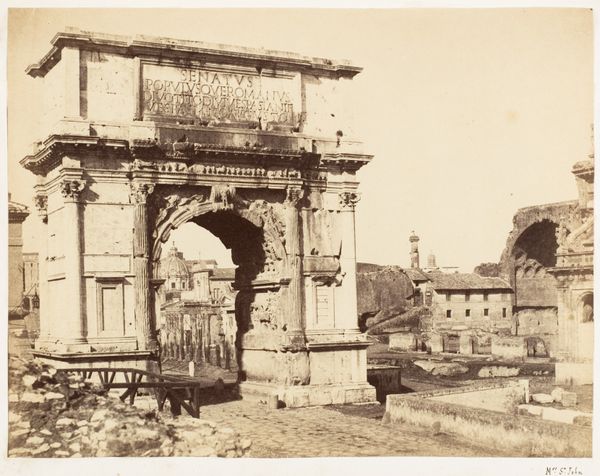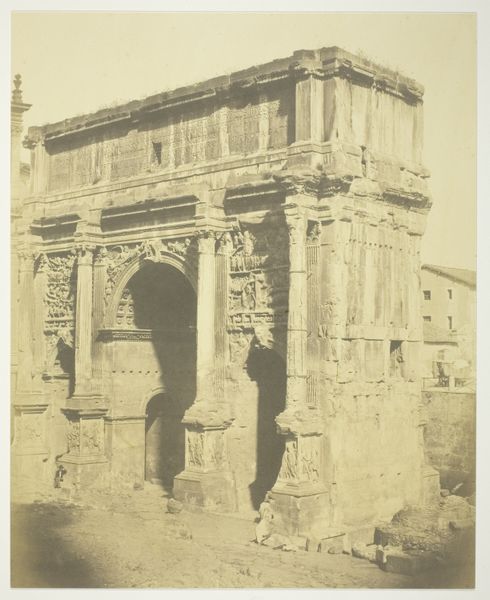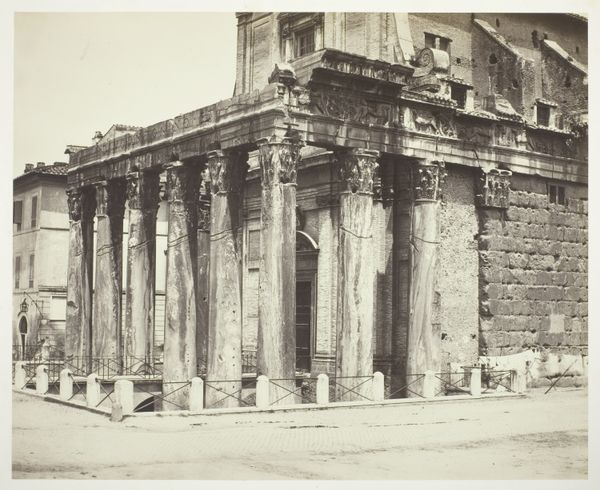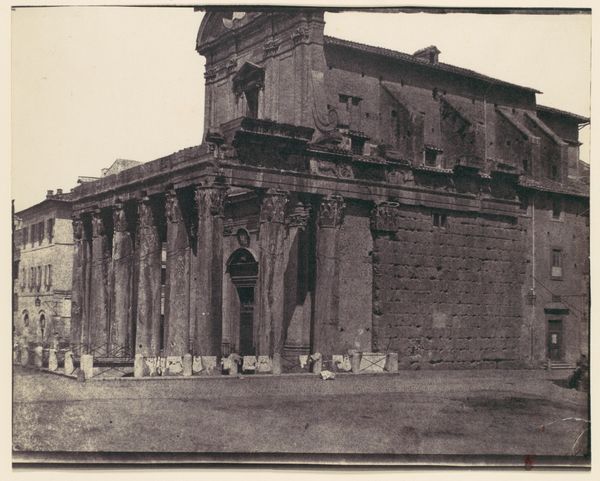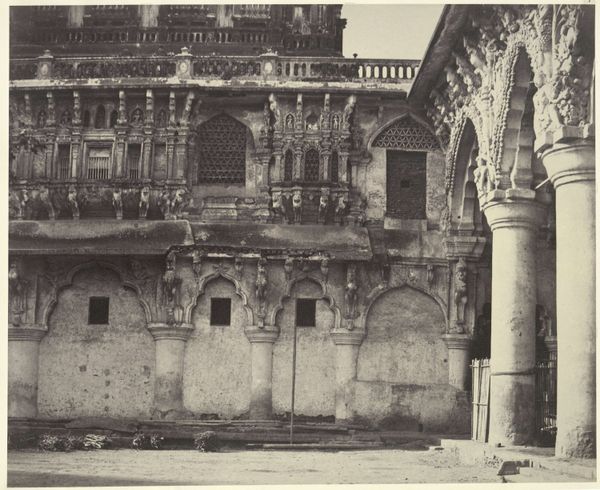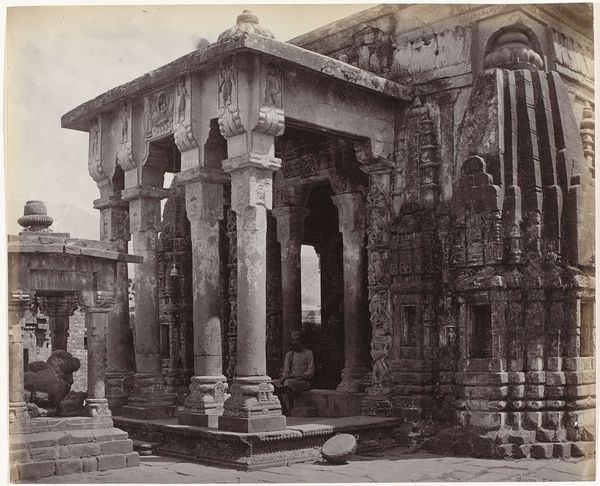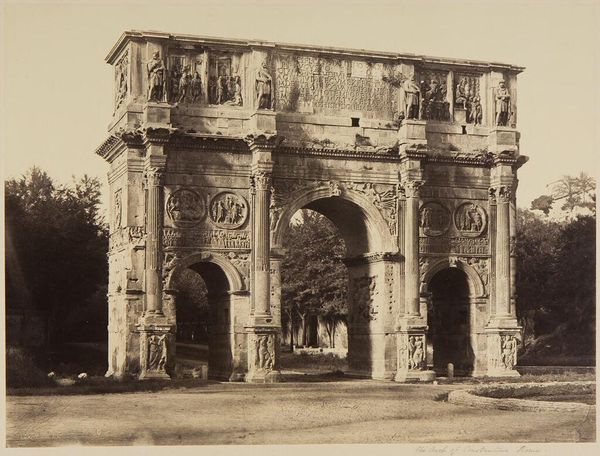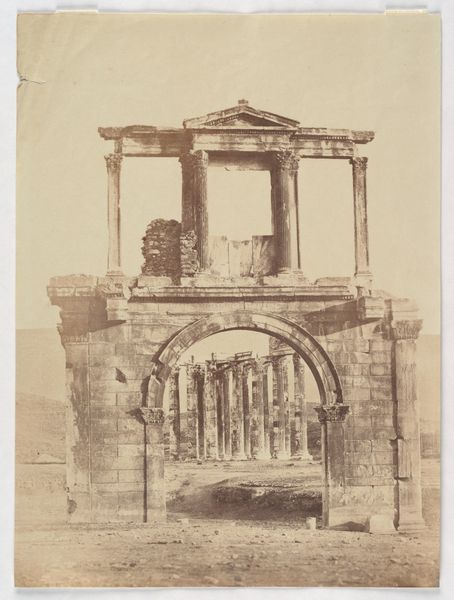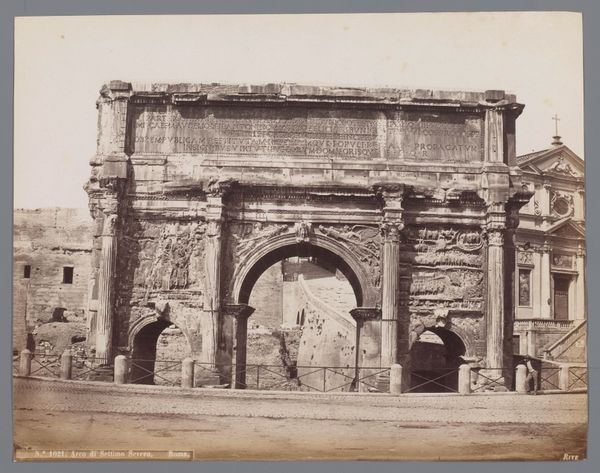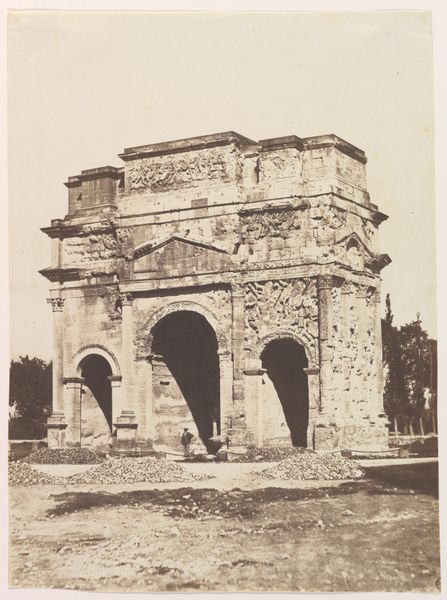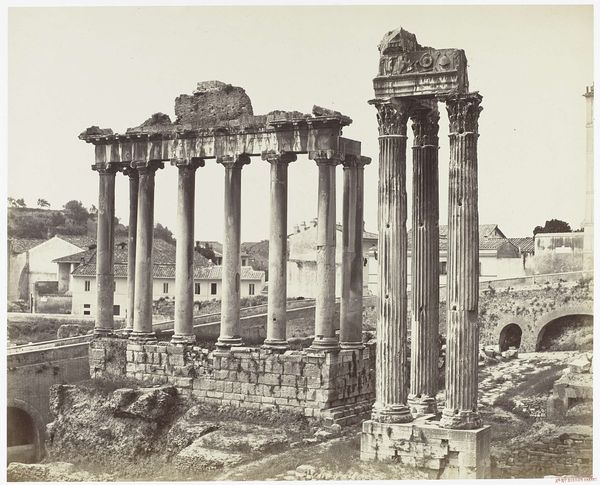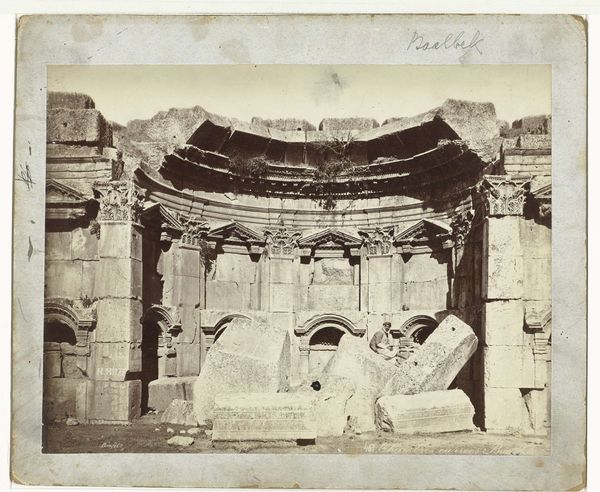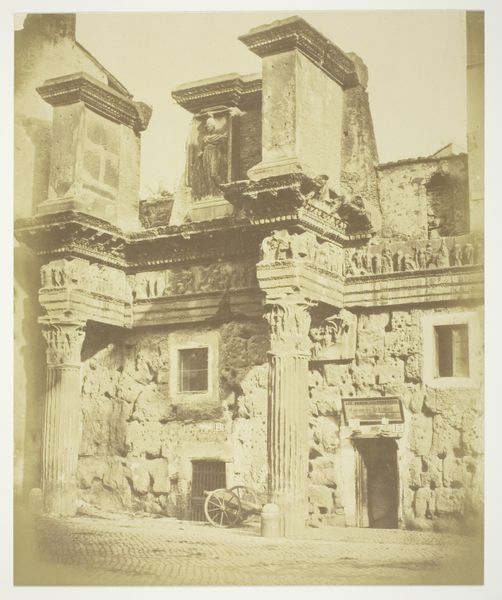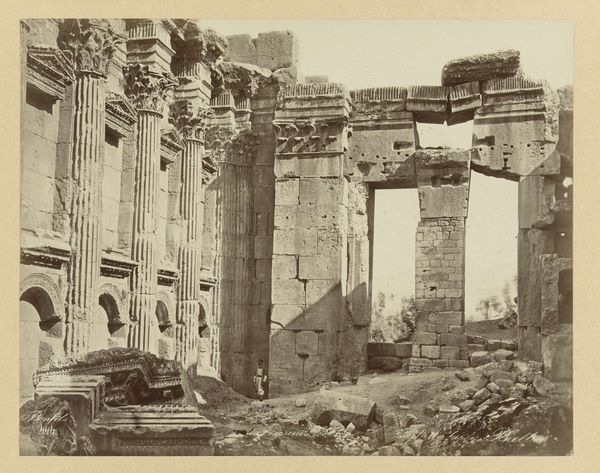
silver, print, photography, architecture
#
16_19th-century
#
silver
# print
#
wedding photography
#
greek-and-roman-art
#
landscape
#
photography
#
arch
#
19th century
#
cityscape
#
architecture
Dimensions: 36.8 × 44.9 cm (image/paper); 51.5 × 69.3 cm (mount)
Copyright: Public Domain
Editor: Here we have the Bisson Frères' photograph, "Arc de Septime Sévère, Rome," likely from the mid-1850s. The silver print gives it an almost ghostly feel. It’s a solid, imposing structure, but the faded details also make it feel vulnerable, doesn't it? What sort of stories do you see embedded in this image? Curator: The Arch, even in its partial ruin, pulses with layered meaning. Consider the triumphal arch itself. It signifies victory, imperial power, the conquering hero—but through Bisson Frères' lens, the monumentality is softened. Notice how the light catches on the eroded surfaces, making tangible the passage of centuries, the diminishment of empires. What emotions arise for you when considering that the image was created through photography, an emerging technology? Editor: Well, knowing it’s a photograph taken in the mid-19th century adds another layer. It’s like the Bisson brothers were trying to capture and freeze a specific moment in time, to make the past present through the very new technology of photography. Curator: Precisely! And think of what this arch represented in its own time—Roman triumph, a kind of eternal present of imperial power. By photographing it amidst visible decay, the Bisson Frères suggest a different kind of eternal present, a meditation on time, ruin, and cultural memory. Look closely at the buildings adjacent to the Arch, symbols of modernity encroaching on antiquity. What is the cultural implication? Editor: It’s like they are intentionally showing the old and the new existing side by side. It makes you think about how civilizations rise and fall, and how time changes everything. I guess I didn't think about photography being so effective at capturing that sort of transformation. Curator: Exactly! And that visual juxtaposition imprints deeply, making this photographic work both document and cultural commentary. The Bisson brothers, capturing that Roman Arch, unwittingly captured the zeitgeist of cultural transformation.
Comments
No comments
Be the first to comment and join the conversation on the ultimate creative platform.
